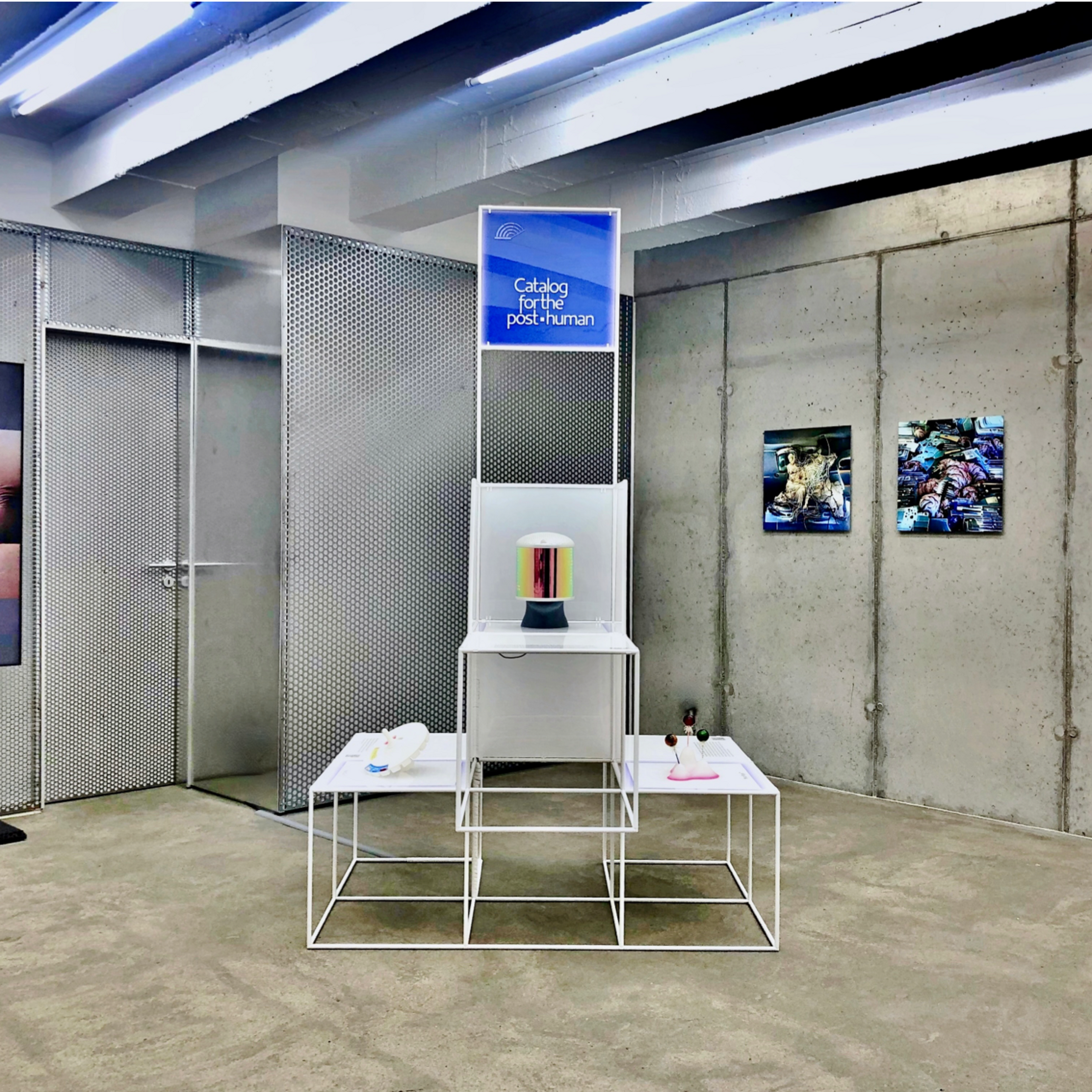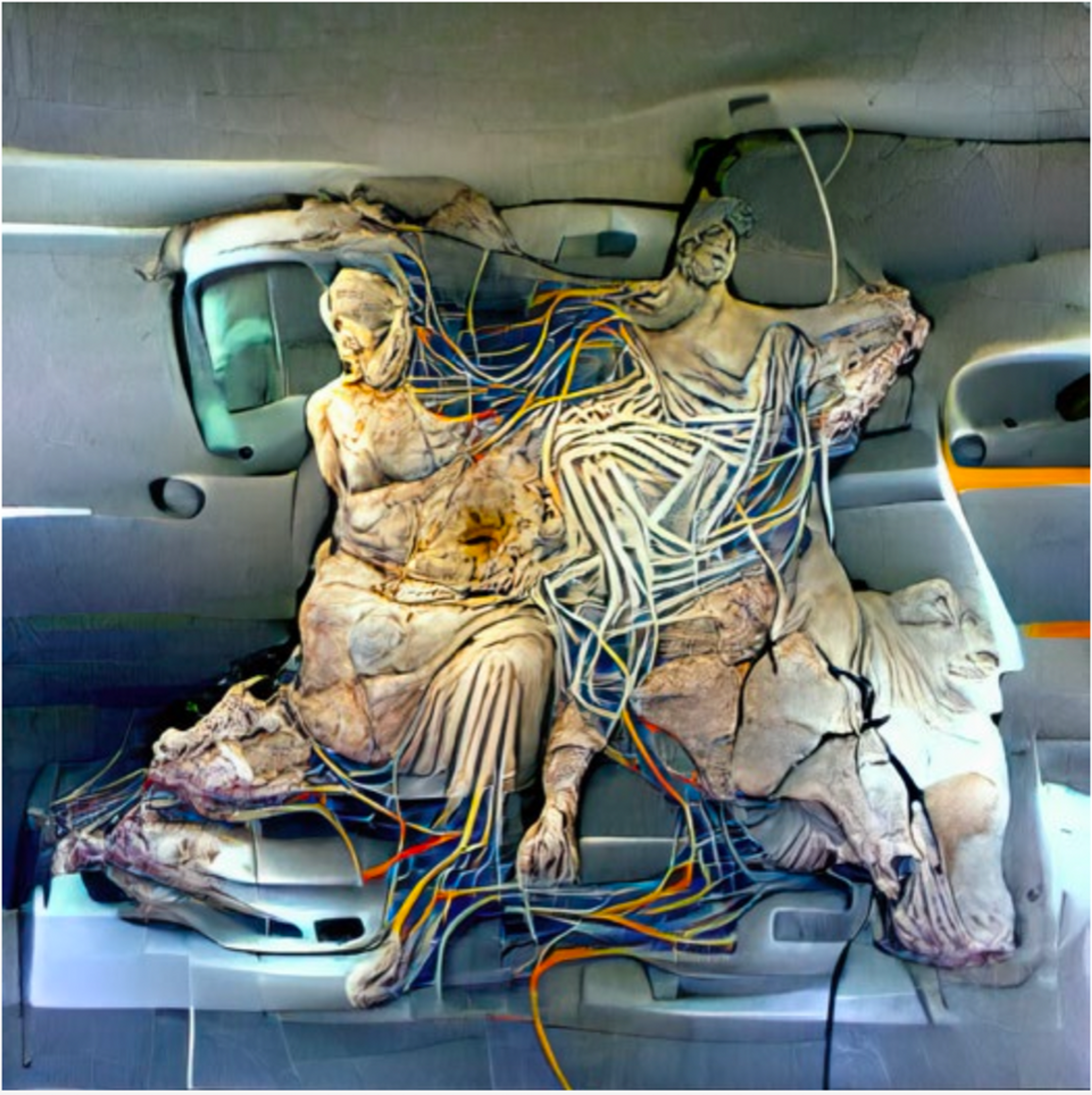Exhibition
The Whole Earth 2045
Group show
November 6, 2021–February 26, 2022

Johanna Bruckner, Grégory Chatonsky, Parsons & Charlesworth The Whole Earth 2045 Nov. 6–Dec. 11, 2021 (extended through Feb. 26, 2022)
Memories and Bodies from the Future
An exhibition inspired by Futurist and Head of Technical Development at Google, Ray Kurzweil. Kurweil predicted that 2045 marks the tipping point at which artificial intelligence will surpass human intelligence (Singularity), and the counterculture magazine "The Whole Earth Catalog" seen by Steve Jobs as an analog precursor of Google-like search engines. Three artists address crucial issues: the future of human labor, physical and psychological impacts of data-driven productivity, AI-generated human dreams, and trans-corporal experiences in a data surveillance society.
The Artists.
Johanna Bruckner (Zürich); Grégory Chatonsky (Paris); Parsons & Charlesworth (Chicago)
Curator. Madeleine Schwinge
The Catalog for the Post-Human (CFPH), Parsons & Charlesworth
The installation invites visitors into a space that mixes the familiar design language of a commercial trade fair, with an unfamiliar collection of objects relating to the future of work, productivity labor and the body. This fictional commercial environment aims to provoke conversations about the ethical and social dimensions of our technologically mediated futures. Imagining a future where success depends upon our ability to be permanently cognitively sharp, quantifying ourselves with data, and able to work the long and irregular hours assigned by algorithm led corporations, Catalog for the Post-Human provides tools to help workers cope with circumstances in which their bodies may be pushed to the limit.


e-phemeral skin, Grégory Chatonsky
This book takes the first sentences of Jean-François Lyotard’s Libidinal Economy (1974). This introduction has a very particular style for a work of philosophy. As was often the case at that time, the openings of this philosopher’s books are literary, intense, analogical and experimental. They evoke experiences and sensations at the limit of discursive thought. Here, the writing seems to operate a body at the limit of the human and to open it under all its folds. The opening of the pages becomes the opening of a monstrous organism half-material half-conceptual.


Memories Center: The Dreaming Machine, Grégory Chatonsky
The artist has programmed an AI capable of interpreting fragments of this text in the form of images by combining, transforming and dismantling a stock of existing images consisting of 14 million documents. The images thus produced are cultural syntheses, images of images according to a monstrous recursivity which is similar to the body that Lyotard tries to make emerge from his writing. The images follow one another, as if disconnected from a text that retains all its autonomy.


Crush Pad Lava, Johanna Bruckner
Bruckner understands net pornography in terms of its affectively interwoven corporeality, formed between sensation, technology and labour within the internet. The principal element in her new multimedia installation is the net porn data that dissipates, becomes lost, and fails because it is outside the spectrum of the usable. Aggregating these „non-existent“ data into corporealities of transition, Bruckner’s collage, in which she collaborates with performer and choreographer Kihako Narisawa, envisions the potential of digital failure as a refusal to submit to contemporary „dataveillance“ society.


In the media. DIE WELT AM SONNTAG, La Biennale di Venezia, Centre Pompidou, Paris
Front photo. Parsons & Charlesworth, Catalog For The Post-Human (CFPH), installation view © re:future lab 2021
Photos in the text. (1) MycoPops © Parsons & Charlesworth; (2) ClickBaitWear © Parsons & Charlesworth; (3) (4) E-phemeral Skin 2021 50x50 © Grégory Chatonsky; (5) (6) Crush Pad Lava, 2021, video still © Johanna Bruckner
Location. re:future lab, Berlin (Germany)
In-presence
Program. The Whole Earth 2045—Memories and Bodies from a Future, is Chapter II "Machine World", as part of 2021 Autumn-Winter program "Human-Machine-World, Art for the Anthropocene".